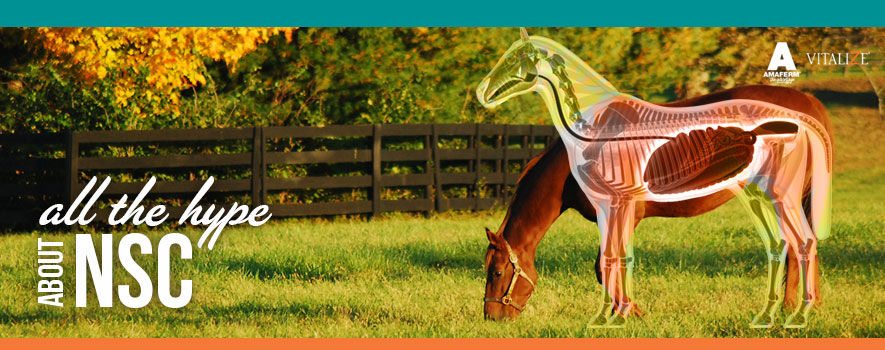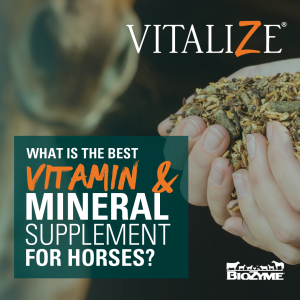
You may have heard about NSC, but what’s the big deal? NSC stands for non-structural carbohydrates and refers to the sugars and starches found in feeds. While performance horses may require a certain level of NSC to meet their energy needs, feeding high levels of NSC can have unfavorable effects, especially for horses with metabolic disorders or starch sensitivities.
NSC are broken down and absorbed in the horse’s small intestine. Once absorbed, they can be stored as glycogen in the liver and muscles. However, only a certain amount of NSC can be broken down while in the small intestine. Undigested NSC then passes thru to the hindgut where it undergoes fermentation by microbes. The fermentation process produces lactic acid, which lowers the pH of the hindgut. This can lead to several hindgut issues, such as hindgut acidosis, gas and colic, and metabolic problems. Therefore, it is important to control the amount of NSC fed to a horse, especially those prone to metabolic diseases such as laminitis. In general, it is recommended that a horse with metabolic issues receive a diet with no more than 12% NSC, while a normal horse can easily tolerate NSC levels of around 20%. Be advised that this recommendation represents the total percentage of NSC in the diet and that some individual components of the diet, especially those included in small quantities, may be greater.
Many fortified grains are now listing the percent NSC as part of the guaranteed analysis on the feed tag. However, it is also important to take into consideration the NSC content of the horse’s forage source. Many horse owners often think of spring grasses being high in sugar and starch and a trigger for laminitis. But, depending on conditions, fall grasses can have NSC as high as those lush spring pastures. This is especially true when it is sunny during the day and very cold at night. During the day, the grass uses sunlight to generate energy (sugar), but, if the grass does not use that energy to grow during the night, as is the case when it is cold, the extra sugars remain in the grass. When horses consume that grass early in the day, they may be receiving a high level of NSC. This is very important to keep in mind, especially when managing horses who have a history of or are at a high risk of developing metabolic problems like laminitis.
Whether or not your horse has a high risk of metabolic issues, feeding a supplement that serves to mitigate the consequences of NSC reaching the hindgut is a good practice. Amaferm, a prebiotic found in all Vitalize products, is known to stimulate the bacteria that take up the lactate acid produced when NSC is fermented. Adding it to a feeding regime can help buffer the pH in the hindgut and avoid digestive health issues, resulting in a healthier horse that’s ready to perform.

